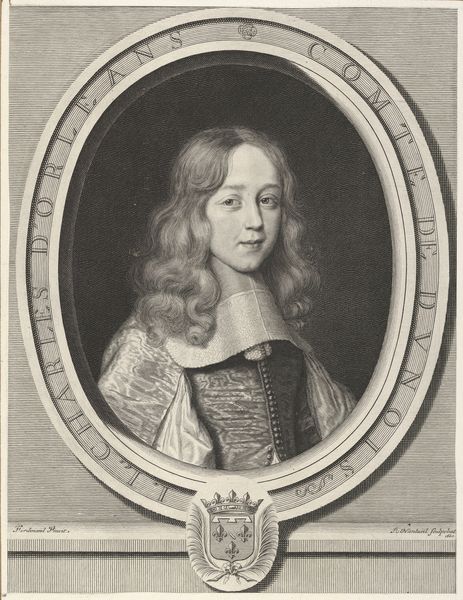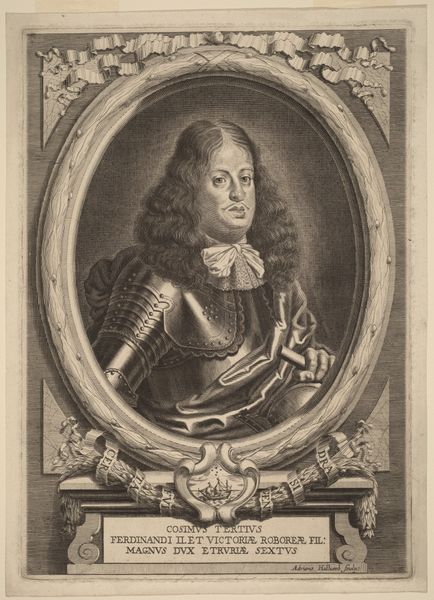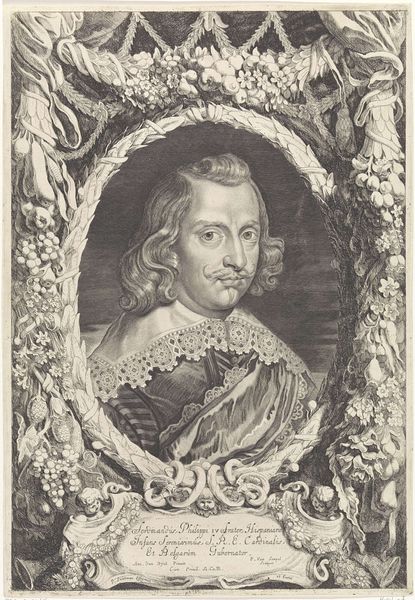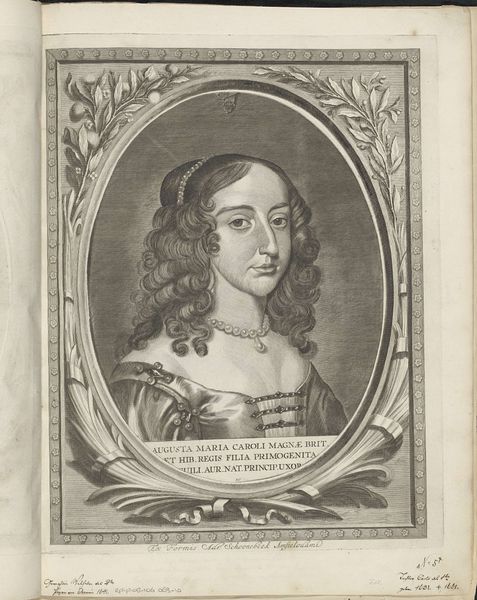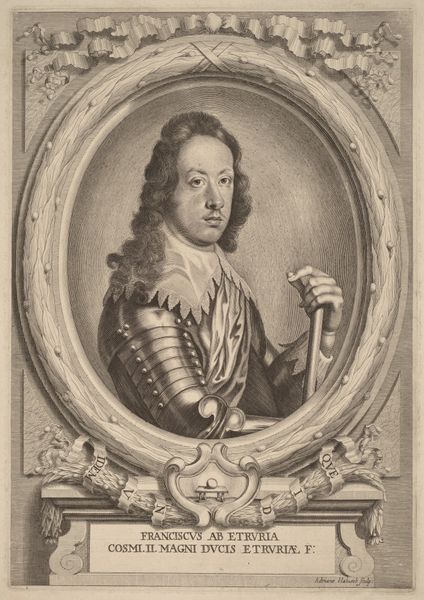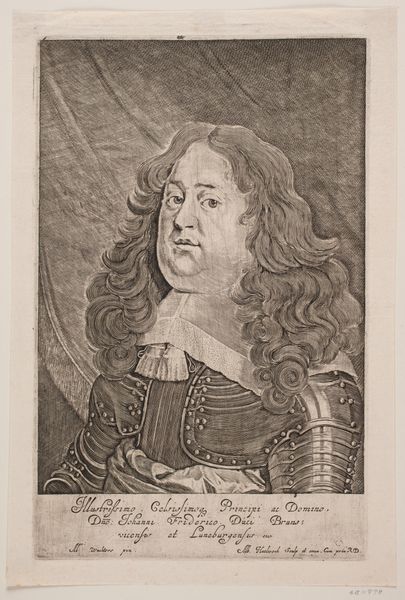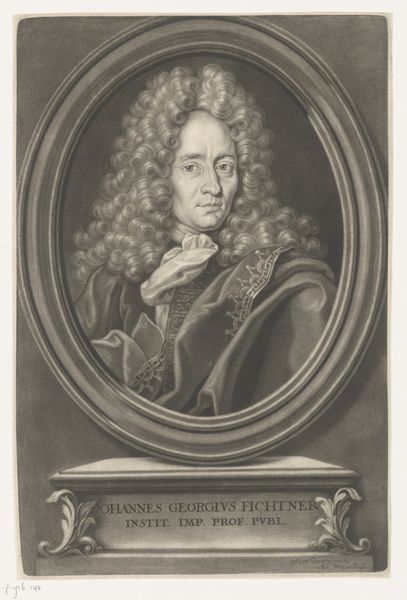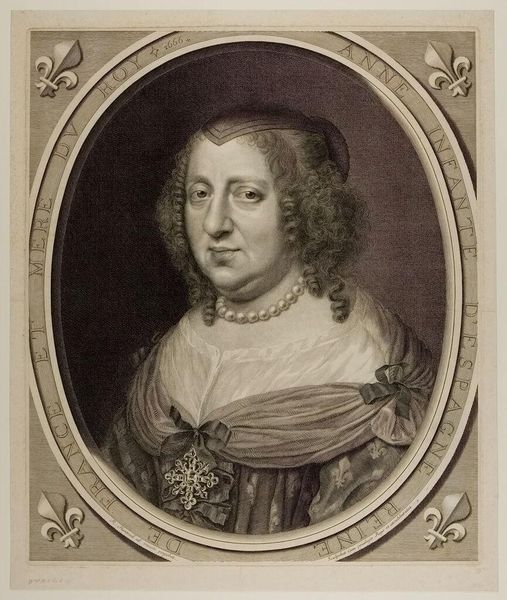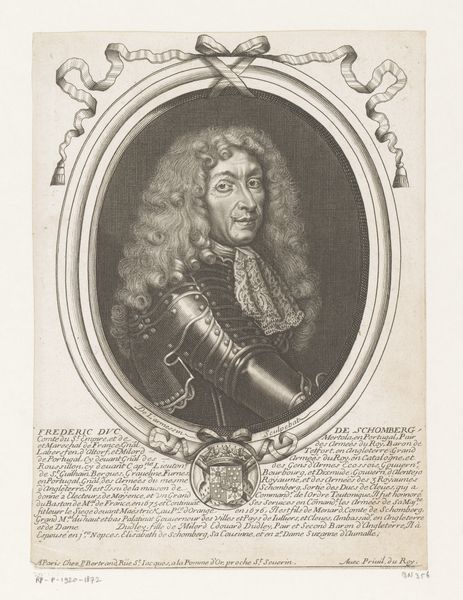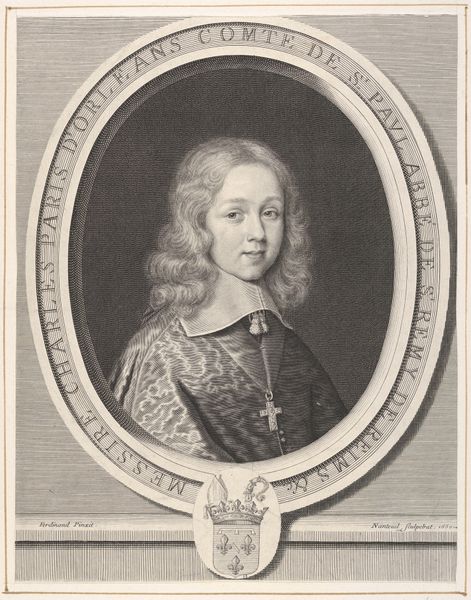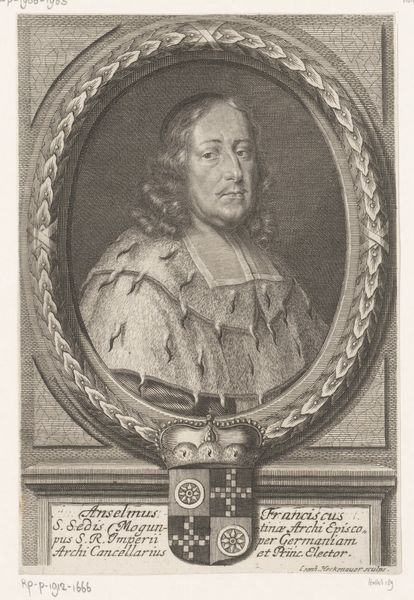
print, etching, engraving
#
portrait
#
baroque
# print
#
etching
#
line
#
portrait drawing
#
history-painting
#
engraving
Dimensions: 562 mm (height) x 416 mm (width) (bladmaal)
Curator: We’re now viewing a piece titled *Sophie Amalia*. This portrait engraving was created by Albert Haelwegh sometime between 1646 and 1649. Editor: Immediately, I am struck by the delicate use of line. The composition, framed by an ornate oval, evokes a somber mood, even regal perhaps. Curator: Yes, Haelwegh's technique truly brings forth the details and texture. It’s a rather classic example of Baroque portraiture, though rendered in print rather than paint. Prints such as these served an important role in disseminating imagery of the ruling elite throughout Europe. Editor: I find the frame around the subject’s portrait quite imposing, in contrast to the delicacy in her dress details, for instance. Is it an attempt to reinforce the subject's position? Curator: Undoubtedly. Portraiture has long been utilized to affirm status, project power and establish a sense of dynasty. Notice the text cartouche beneath her image, replete with titles. The baroque love of elaborate ornamentation here certainly speaks to the sitter’s elevated social standing, both practically and symbolically. Editor: There's a rigidity in her posture that corresponds with the rigidity in Baroque convention, the controlled etching in the print itself. But I also see subtle nuances that perhaps allow a hint of the subject's own persona to filter through. Curator: And such prints were also readily reproducible, affordable, and distributable on a grand scale in their time. So, we should perhaps also examine how such works impacted broader notions about power, representation, and access. The circulation of royal likenesses helped to shape and control public perceptions. Editor: It’s fascinating to consider this artwork as not merely an aesthetic object, but a strategic communication tool that wields cultural and political weight. I’ll be thinking more about who exactly might have viewed this image and what conclusions they would have drawn about their sovereign. Curator: Indeed, it makes me think about the ingenuity with which Albert Haelwegh used line and form to fulfill political expectations and demands through the act of image-making itself.
Comments
No comments
Be the first to comment and join the conversation on the ultimate creative platform.

